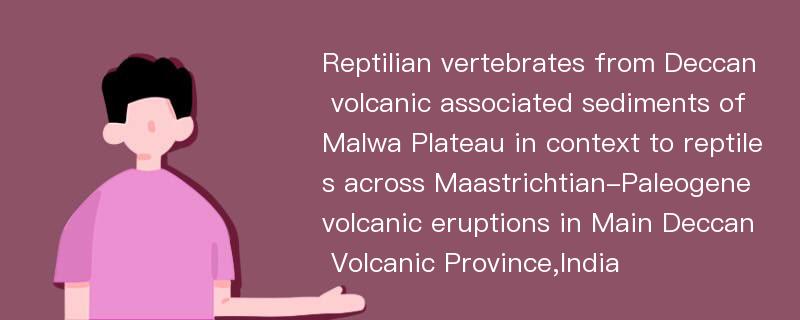
论文摘要
The enormous eruptive volume of India’s Deccan continental flood basalts has been linked to global mass extinction at Cretaceous-Paleogene boundary and destablilisation of both marine and terrestrial ecosystems before and after the Chicxulub bolide impact. Deccan Volcanic Province(DVP) currently covers around 500 000 km2 of land between latitude 15°10′--24°30′N and longitude 70°10′--82°10′E over central India towards the west coast. The pre-erosional volume is estimated at around 1.6 million km3 which is one of the largest volcanic eruptions on the Earth. The Deccan lava flows in geographically separated areas in DVP are considered to have separate sources and sites of eruptions and were outpoured in different magnetochrons viz. C30 n to C28 n of Maastrichtian to Paleocene. The Deccan volcanic sequences(DVS) in different provinces are associated with(i) sediments deposited before the arrival(Ground Zero) of the first lava flows-designated as infratrappean or Lameta sediments and(ii) sediments between the lava flows deposited during the period of quiescence at different stratigraphic levels designated as intertrappean(interflow) sediments. The Ground Zero Lameta sediments are the major dinosaur bearing sediments deposited in six inland basins viz. 1. Balasinor-Jhabua; 2. Sagar; 3. Jabalpur; 4. Ambikapur-Amarkantak; 5. Salburdi; 6. Nand-Dongargaon. The sediments represent mainly the terrestrial ecosystems destabilised by the volcanism and they record history of biotic and environmental changes impacted by the volcanism across the Deccan volcanic eruptions. The titanosaurs, crocodylimorphs and bothremydid turtles survived across the first flows in the region in the C30 n. The skeletal remains of the surviving reptiles are preserved in the Deccan volcanic associated intertrappean lake sediments at different stratigraphic levels higher-up in the sequence. Locally, in the Malwa region the Scincomorp and Anguimorph lizards make their first appearance during the earlier phase of volcanic eruptions in C30 n wherein their well preserved bones are found in the intertrappean/inter lsva lake sediments deposited between the lava flows. The lizard fauna is indicated to have better flourished after the initial Deccan eruptions possibly owing to increased humidity.
论文目录
文章来源
类型: 期刊论文
作者: Dhananjay Mohabey,Bandana Samant,Anup Dhobale,Deepesh Kumar
来源: Global Geology 2019年04期
年度: 2019
分类: 基础科学
专业: 生物学,地质学,地球物理学
单位: Department of Geology, RTM Nagpur University
基金: the Research Grant ( MoES,PO ( GEOSCI ),49,2015 ) of Ministry of Earth Sciences,Government of India,New Delhi
分类号: Q915;P317
页码: 250-257
总页数: 8
文件大小: 3191K
下载量: 7
